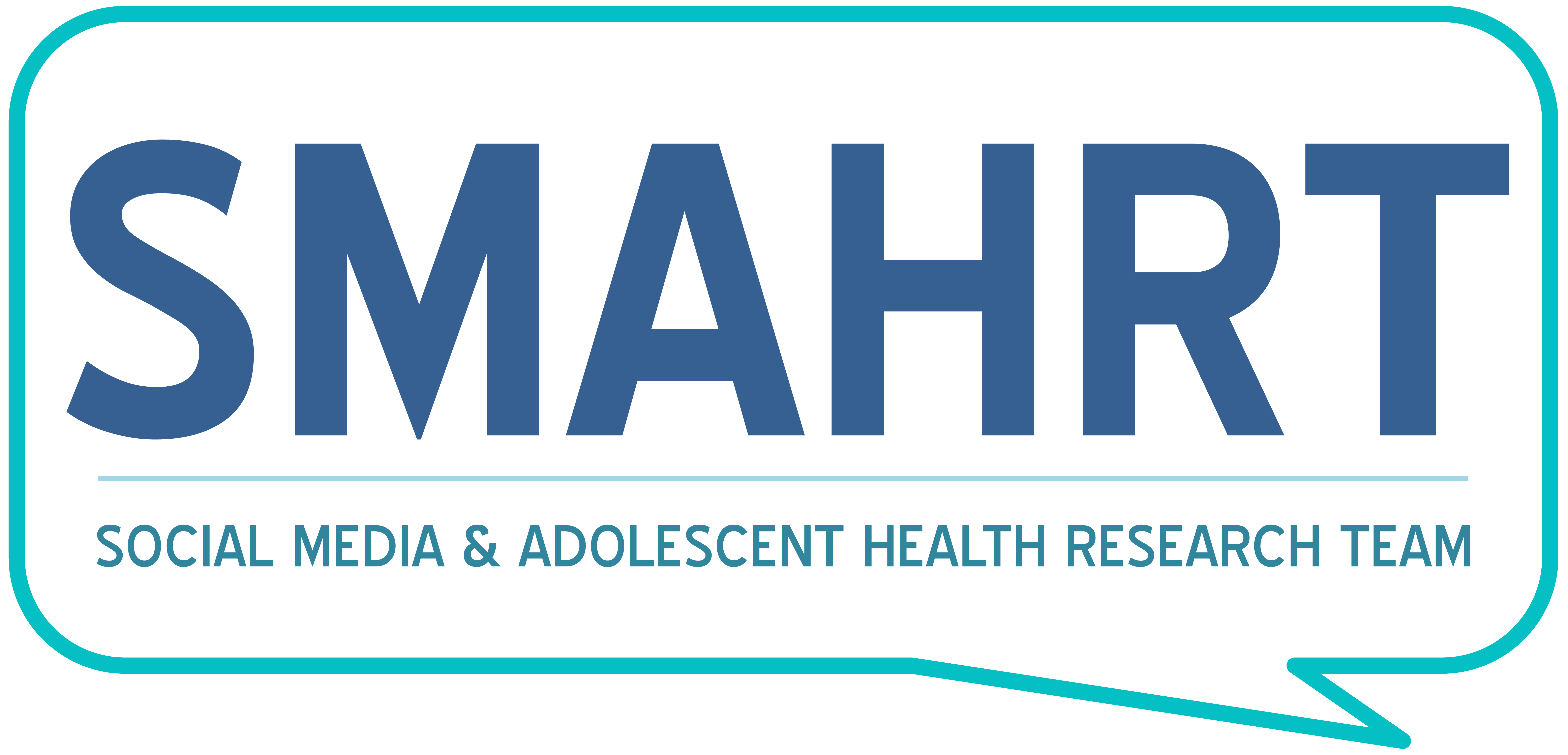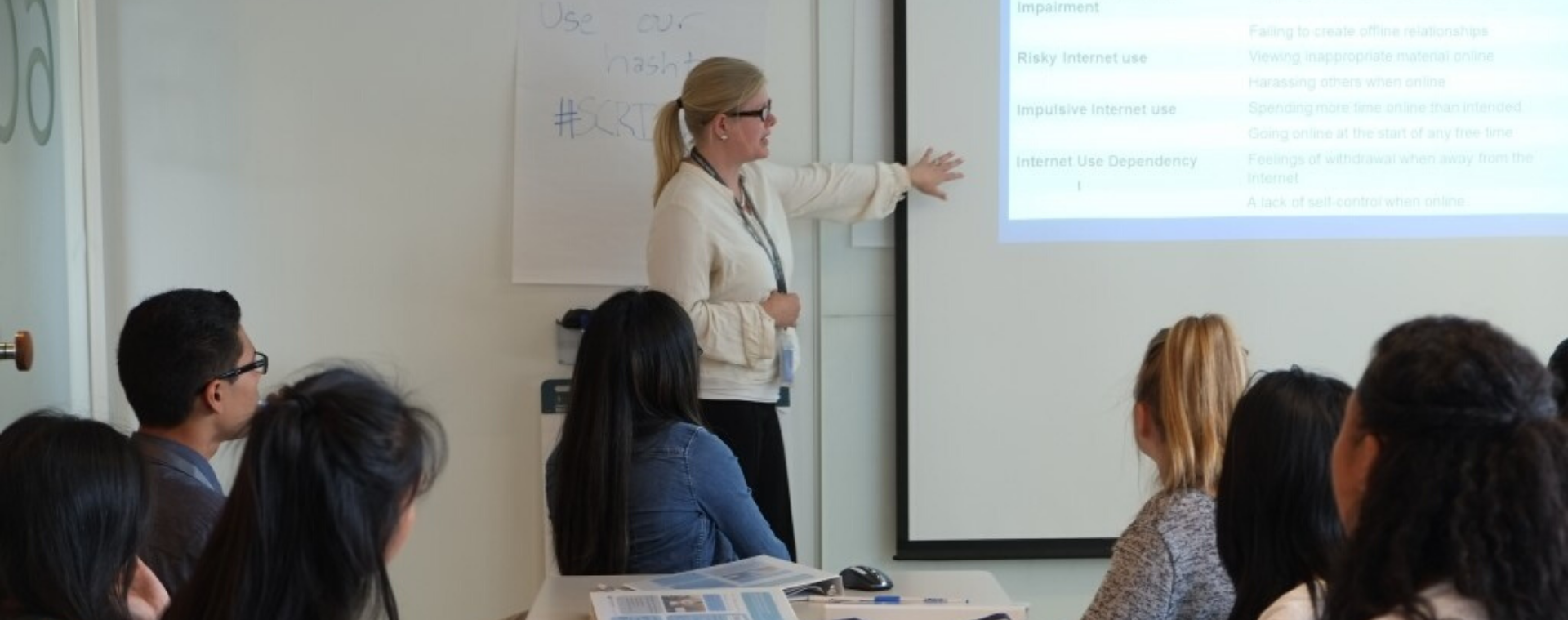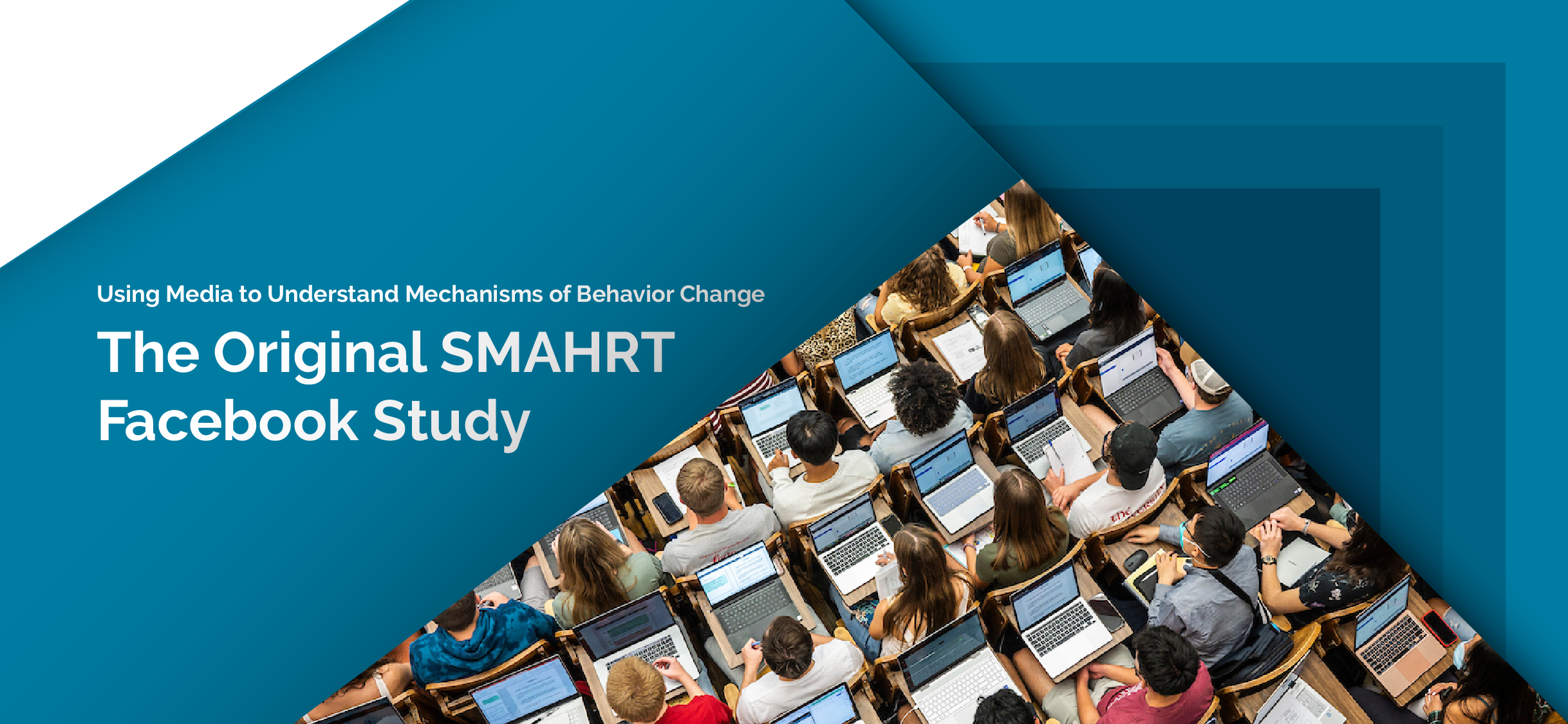Written by: Meisi Li
Through an interdisciplinary research approach and collaboration with multiple critical stakeholders, the Social Media and Adolescent Research Team (SMAHRT) is dedicated to evaluating the benefits and risks of adolescent social media use.
“SMAHRT was awarded its first R01 grant, Using Media to Understand Mechanisms of Behavior Change, in 2011,” said Dr. Megan Moreno, the principal investigator of the SMAHRTeam. “It was our first large-scale and longitudinal project, allowing us to understand how and why people share health information about substance use. We collected a large amount of data, which also helped us have data available to share with others including trainees and collaborators.”
The grant had three aims, one of which was to understand how college students represented substance use on social media during college. For that aim, we followed 338 four-year college students for five years on social media and correlated that social media content to self-reported information from interviews.
A Research Project Grant (R01) is the primary means by which the National Institutes of Health (NIH) supports health-related research and development in accordance with its mission to seek fundamental knowledge about the nature and behavior of living systems. According to NIH officials, the R01 is designed to support researchers in their specific areas of interest and competence.
SMAHRT’s R01 yielded 24 papers over the course of 11 years. We are looking back at a few of the studies about peer influence, Facebook alcohol displays, marijuana references, and driving under the influence.
Peer Influence
First, SMAHRT research on the relationship between peer influence and health behaviors suggests that peer influence can be a strong predictor of student behaviors such as smoking and drinking, both online and offline. In a 2019 study, My Friends I’m #SOTALLYTOBER, we examined the association of Facebook alcohol-related posts with college students’ drinking norms, including perceptions of friends’ approval and students’ drinking. We found that time, drinking more, and friends perceived approval of drinking, was significantly and positively associated with participants posting alcohol-related content. Increases in alcohol-related content on social media was likely to increase college students’ drinking behavior.
Facebook Alcohol Displays
SMAHRT conducted a content analysis on college students’ substance use displays on Facebook to identify the possible link between users’ social media displays and substance use behaviors. In a 2014 study, Facebook Displays as Predictors of Binge Drinking, results showed that Facebook alcohol displays prior to college enrollment directly predicted binge drinking one year into college.
We also investigated the link between Facebook alcohol displays and real-time alcohol behaviors. In a 2015 study, Underage College Students’ Alcohol Displays on Facebook and Real-Time Alcohol Behaviors, SMAHRT researchers identified “New Alcohol Displayers” which included participants who displayed a Facebook alcohol reference for the first time. Further, those participants who became “New Alcohol Displayers” reported their past 28 days of drinking behavior via phone interviews. The results showed that 84.9% reported at least one heavy episodic drinking episode, indicating a positive correlation between alcohol references on social media and self-reported recent alcohol use.
Other studies on Facebook alcohol references and drinking behaviors also found differences based on platform and gender. For example, in the publication, Evaluating College Students’ Displayed Alcohol References on Facebook and Twitter, our team analyzed alcohol references for participants with both Facebook and Twitter profiles and noted that college students were more likely to display alcohol references on Facebook than on Twitter. In terms of gender differences in college students’ alcohol references, the Gender Differences in College Students’ Alcohol Representations in Facebook Status Updates study found that women were more likely than men to use a level of inebriation term and that Facebook may promote the norm of excessive drinking among female college students.
Marijuana References on Facebook
Beyond alcohol use, college students’ display of marijuana references on Facebook and their association with self-reported marijuana use showed a similar pattern of association between online posting and offline health behaviors.
In a 2018 study, A Longitudinal Investigation of Associations Between Marijuana Displays on Facebook and Self-Reported Behaviors Among College Students, results showed that over a time frame of four years, the percentage of Facebook profiles with visible marijuana references ranged from 5% to 10%. Marijuana users were more likely to display marijuana references, compared to non-users.
Driving Under the Influence
In addition to the direct increase in physical and cognitive health risks associated with alcohol and marijuana use, subsequent behaviors, such as driving under the influence, may also increase the risk to personal safety.
In Marijuana-Using Drivers, Alcohol-Using Drivers, and their Passengers: Prevalence and Risk Factors Among Underage College Students, a 2014 study, participants self-reported marijuana and alcohol use in the past 28 days, whether they drove after using marijuana or alcohol, and whether they rode in a car with a driver who used marijuana or alcohol. Results showed that driving and riding after marijuana use was common among underage, marijuana-using college students. The risk of driving after marijuana-only use was 6.24 times higher compared to participants who used alcohol only. The prevalence of substance use and the likelihood of driving and riding after substance use were significantly higher among males than females.
The above research focuses on a few findings from the Using Media to Understand Mechanisms of Behavior Change grant awarded to SMAHRT in 2011. It shows how SMAHRT has examined the relationship between social media substance displays and substance use through interviews and content analysis. Building on the findings from this grant, SMAHRT began to investigate and design intervention studies which led to two new projects: Social Media and Health Information Study (SMAHI) and Technology and Young Adult Health Study (TYAH).
“Ultimately, the Using Media to Understand Mechanisms of Behavior Change project helped shape our mission to advance science and support trainees,” said Dr. Moreno.
Want to learn more about SMAHI and TYAH and how they relate to this project? Stay tuned for our blog updates!


